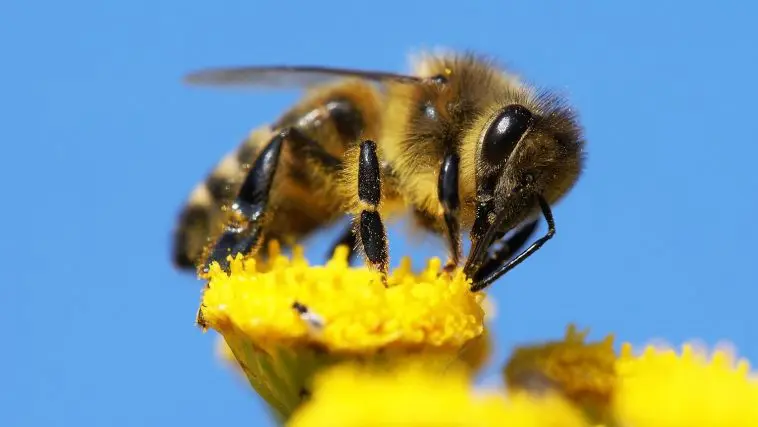[Originally collected on the Thank God for Insects news page]
Stunningly Complex Caterpillar Venom
The Australian mottled cup moth may grow up to be a rather unremarkable bug, but its caterpillar stage has fascinated scientists for many years. This 2021 report walks us through some of the exciting discoveries—and be sure to notice how complicated the chemistry is.
Does it make more sense for these insects to have developed by blind chance or to have been designed by a Genius?
Dr Walker’s research found the caterpillar has venom toxins with a molecular structure similar to those produced by spiders, wasps, bees and ants. The research also unlocked a source of bioactive peptides that may have uses in medicine, biotechnology or as scientific tools…”We found that the venom is mostly peptides and shows stunning complexity, containing 151 different protein-based toxins from 59 different families.”…
Some peptides already produced in the laboratory as part of Dr Walker’s research showed very high potency, with potential to efficiently kill nematode parasites that are harmful to livestock, as well as disease-causing pathogens. “Our research unlocks a new source of bioactive peptides that may have use in medicine, through an ability to influence biological processes and promote good health,” he said. ~Science Daily
If Only We Can Mimic a Honeybee’s Fur
Clearly, this fuzzy insect has been able to resist rubbing its hair off for a long time, but why? What are the odds it was given a specialized coat by a loving Creator rather than random mutations?
One of many movements a bee’s body makes is the repetitive curving and straightening of its abdomen. Now, researchers reporting in ACS Applied Materials & Interfaces have found that tiny hairs reduce friction from these motions, saving energy for the industrious insects’ daily activities while reducing wear and tear. This knowledge could help researchers design longer-lasting moving parts. ~Phys.org
Sweat Bees Recognize Overhead Patterns in the Dark
Flying at night, especially in the short spaces of time closest to daylight, has distinct advantages. Fewer predators are likely to catch you and the competition for pollen is much lower. But how do you find your way around? We still have more to learn about these bees, but it is becoming clearer that they are amazing at recognizing “dorsal” patterns in the roof spaces above their nests. Why?
People — who get lost easily in the extraordinary darkness of a tropical forest — have much to learn from a bee that can find its way home in conditions 10 times dimmer than starlight…
Since the late 1990’s Eric Warrant and his team from the Vision Group at the University of Lund in Sweden has collaborated with Wcislo to learn more about Megalopta’s optical superpowers. Their work showed that Megalopta’s special compound eyes are 30 times more sensitive to light and concentrate photons of light in a way day-flying honeybee eyes cannot…
Understanding how Megalopta navigates may be of interest for military applications. Now, most drones use GPS to navigate, but GPS and satellites can be jammed or destroyed. ~Science Daily.com
Building Better Robots and Discovering Amazing Science go Hand in Hand
This research paper’s abstract says it all. We become better engineers by studying the natural world and we understand the natural world by applying engineering concepts. What are the odds a Master Engineer gave us—and the natural world—these characteristics?
It is an engineer’s dream to build a robot as competent as an insect at locomotion, directed action, navigation, and survival in complex conditions. But as well as studying insects to improve robotics, in parallel, robot implementations have played a useful role in evaluating mechanistic explanations of insect behavior, testing hypotheses by embedding them in real-world machines. The wealth and depth of data coming from insect neuroscience hold the tantalizing possibility of building complete insect brain models. Robotics has a role to play in maintaining a focus on functional understanding—what do the neural circuits need to compute to support successful behavior? ~Science.org
https://science.sciencemag.org/content/368/6488/244
Replacing Boom-Sniffing Dogs with—Grasshoppers?
While there’s a lot of work left before the US military releases squadrons of cyborg grasshoppers to locate explosives, there’s no question these bugs are good at identifying a lot of different smells.
Barani Raman and his colleagues at Washington University in Missouri have tapped into the olfactory senses of the American grasshopper, Schistocerca americana, to create biological bomb sniffers.
In insects, olfactory receptor neurons in their antennae detect chemical odours in the air. In turn, these neurons send electrical signals to a part of the insect brain known as the antennal lobe. Each grasshopper antenna has approximately 50,000 of these neurons. ~New Scientist
My Brain is Better than Yours! The Insect Version
We can’t help wondering how much brainpower various animals have. But because the neurons that handle the work of thinking are so small and densely packed we have been forces to use rather crude measurements such as braincase volume. Now researchers are taking the world’s tiniest brains and pulling out the neural nuclei to compare their relative density—and the results are both exciting and to be expected from the handiwork of a loving Creator:
Contrast, for example, the sea hare — a giant sea slug found off the coast of California that can weigh more than 12 pounds — with the fruit fly Drosophila. The sea slug’s brain alone dwarfs the entire fly by a lot, yet it has just 18,000 neurons, far fewer than the fly’s approximately 100,000.
For example, the metallic green sweat bee, which is commonly seen in the Southwest and belongs to the genus Augochlorella, has a particularly high number of neurons for its brain size: about 2 million per milligram, more than the highest neuron densities found in the smallest vertebrate species — smoky shrews in mammals and goldcrests in birds.
Ants, on the other hand, tended to come in on the lower end of the spectrum. Compared with bees and wasps, ants had small brains and relatively few brain cells…”We think this has to do with the ability to fly, which would make it less about intelligence but more about processing of information,” he says. “Ants rely on scent information, whereas bees rely more on visual information.”
Gronenberg points to the tiny fairy wasp as a strong contender for the “tiniest brain in the insect world” award. Three strands of human hair, laid side by side, would cover the body length of the tiny creature, whose brain consists of fewer than 10,000 neurons.”Yet, this parasitic wasp can do all the things it needs to do to survive,” Gronenberg says. ~Science Daily.com






